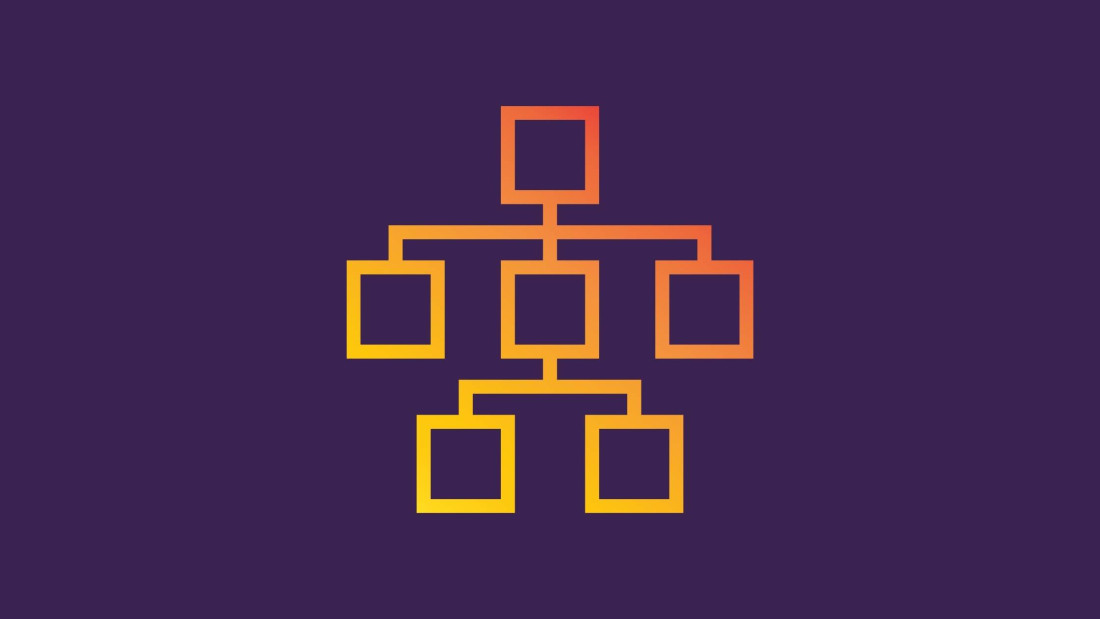“You know, I’m really jealous of marketers. They can just ship stuff. Imagine if I could just ship stuff when I had good ideas…”, says a Product Data Manager from a recent tweet from John Cutler, Product Evangelist and Coach at Amplitude.
Teresa Torres would advise against this. Why? Because, as a product discovery coach and founder of Product Talk, Teresa advises product teams to fight the temptation of jumping straight into ideas without backing the solutions up with the purpose, business value, and extensive product discovery.
In fact, she developed a tool for this. It’s called the Opportunity Solution Tree, and she explains it in detail in her book Continuous Discovery Habits. As she describes it, this tool can change the way product teams work – for the better, and for good.
We reached out to Teresa Torres to help us understand this framework, how to use it, and why. We also wanted to know how exactly it helps you work differently and make better product decisions.
What is the Opportunity Solution Tree?
The Opportunity Solution Tree is a tool for making visual connections between business goals, customer needs, opportunities, solutions, and ideas you want to experiment with. It helps you systematically move through the decision-making process and reach the desired outcome with confidence.
The Opportunity Solution Tree focuses on customer needs and helps you build products and features that solve real problems. As part of continuous product discovery, the exercise of opportunity mapping enriches your discovery workflow and helps you prioritize and focus on idea validation.
How the Opportunity Solution Tree works
This tool helps you zoom out and see the big picture. It also helps you assess the opportunity space, identify customer needs, and decide which ideas are going to bring real value to your customers.
It's especially useful when you have a lot of ideas for new features you want to build, but you're not sure what to prioritize. Visually mapping the connection between solutions and customer needs helps you navigate through brainstorming and fine-tune solutions in a truly customer-centric way.
Depending on the opportunities, solutions, and ideas you want to experiment with, this is what the Opportunity Solution Tree can look like:

Why use the Opportunity Solution Tree?
First and foremost, this tool helps you truly understand your customers and their context before jumping into brainstorming ideas.
In other words, it's a way to spend more time in the discovery phase, and then go into delivery only when you’re backed with data and insights. Of course, product discovery isn't linear. It can be a messy process with a lot of unknowns to untangle.
The Opportunity Solution Tree helps you to:
Bring structure into your brainstorming sessions
Add a layer of customer needs to solve real problems
Be mindful of the reason behind each solution
Identify whether the solution is valuable to users
Generate ideas based on identified user needs
That said, let's look into how you can put it into practice.
How to build an Opportunity Solution Tree
The look of your Opportunity Solution Tree will depend on the specific problems you want to solve and the goals you want to accomplish.
The opportunities you identify will depend on your customers' context, needs, and challenges, while the solutions and ideas you come up with will depend on the product development lifecycle stage and the experiments you're going to run to validate the ideas.
It's a tool for visual thinking, so you can start by drawing on a whiteboard. Or, to get a jump start, you can build it with the Opportunity Solution Tree template in Miro.
Now, let’s break it down into actionable steps.
Step 1: Start with the outcome – what you want to achieve
What does success look like? You can focus on your North Star metric here, or choose one of the OKRs or KPIs to answer this question. Use the metrics to define the outcome you want to accomplish.
Note: Create one tree for one desired outcome. If you have multiple metrics you want to improve, make the Opportunity Solution Tree for each.
How to prioritize which outcome is the most important? This is how Teresa Torres thinks about it.

When choosing an outcome, you need to start all the way at the top with your product and business model. What are the inputs to your business model? For example, with the subscription business, it might be “the number of subscribers x how much they pay per month x how long they stick around”. This gets you an understanding of the customer lifetime value. When you add up all your customers, you get total revenue for the company.
The reason why Teresa recommends starting there is that you can then look at how your product influences those numbers. And you can specifically look at it in the domain of your team. Which of those inputs is most important for your team right now?

If you have a team that's focused primarily on retention, you're going to look at that product metric. That might look like engagement with the product or satisfaction with the product because they're both common metrics. Instead, start with your business model. Look at how your product outcomes are input into that business model. How do measurements in your product drive a business outcome? And then, once you've chosen an outcome, the next thing you want to look for is making sure that what you're picking is measurable. So it's a number. Something you can count.
It’s important that you're not counting outputs, Teresa explains it further.
“One such metric is integration. Teams will think about their outcome as an increase in the number of integrations. But that's actually just counting output instead. What you want to think about is the value of having those Integrations. The value of the impact that goes out of that output. And, obviously, the value comes when customers use those integrations. So, a better outcome metric would be increased integration usage.”
You can watch Teresa’s full answer here.
Step 2: Identify opportunities – unmet customer needs
To identify opportunities the right way, you’ll need to do the research first. Talk to your customers, gather their feedback, and learn as much as you can about who they are, what they need, and what their jobs-to-be-done within your product are.
You can then start identifying the opportunities. Keep in mind that these are not yet solutions. The solution branches of the tree will come next in the process.
Opportunities are about the unmet customer needs that you can potentially find a solution for and, ultimately, reach your desired outcome.
How do you find opportunities first? Let’s hear Teresa’s take on this.
In a nutshell, she explains that opportunities emerge from customer stories. You can use interviews to collect specific stories about customers’ past behavior. What needs, pain points, and desires arise in the context of those stories?
Furthermore, as Teresa points out, a lot of teams will ask: “Can't I pull opportunities out of sales requests, support tickets, behavioral analytics, and all of that data?”. Keep in mind that all of those inputs are good inspiration, but they're missing context.

There’s a good inspiration in the interview for what to explore, but I still recommend that you limit your opportunities to what emerges in the customer stories. That way, you understand the context in which those needs and pain points arose.
When you have the opportunities outlined in your tree, the next step is to find the solutions. But keep in mind that not every opportunity will have a solution attached to it. That’s why Teresa Torres emphasizes the importance of targeted opportunities.
The next step will help you identify these.
Step 3: Brainstorm solution ideas – how to satisfy the unmet needs
This is where the tree comes to life. Invite your team and stakeholders to contribute their ideas.
This is also the part where you can easily wander off the path. If you notice that ideas are becoming vague and unrelated to opportunities, take a step back and use the tree as your guide.
How do you keep the tree organized, while allowing space for new ideas to be added? Here's what Teresa Torres advises.

I actually recommend that product teams only generate solutions for their target opportunity. First, they're assessing and prioritizing the opportunity space. I don't recommend prioritizing solutions because we end up comparing a lot of apples to oranges. Instead, prioritize opportunities, and start with generating as many ideas as you can for that target opportunities. Then you can use something as simple as dot-voting to go from a lot of ideas down to just three ideas.
After that, you’ll be able to clearly see one solution you want to develop further. Then, Teresa continues, the way you're going to go from three to “which one do we build” is with assumption testing.
Step 4: Experiment – how will you validate the ideas
Once you have the ideas you want to work on, start testing them out. Add a branch for experiments and define what will you do to validate.

Break your ideas down into their underlying assumptions and then rapidly test those assumptions. The reason why you're doing that across three ideas is that it gives you a good foundation to compare and contrast data. So, you're essentially comparing and contrasting your solutions against each other looking for a clear front-runner.
This is where you make the tree adaptable to continuous experimentation, evaluation, and discovery.
As far as continuous experimentation goes, Teresa Torres emphasizes two key ideas.
"First, you start with a teeny tiny opportunity. That's the value of opportunity mapping. It turns big evergreen opportunities into smaller, more solvable opportunities. And smaller opportunities lead to smaller solutions, which allow you to test quicker because you're working with smaller chunks of work.
The second part is to break your ideas into their underlying assumptions. Often, you can test assumptions a lot faster than full ideas. This is a really critical concept. Most assumption tests you can run in a day or two, while most idea tests take weeks in most environments."
The key is to break your ideas into their underlying assumptions and then rapidly test those assumptions, Teresa concludes.
We created an example using the Miro template to help you understand how the tree could work in real-life. Try it out for yourself.

Who should own the Opportunity Solution Tree?
Teresa likes to see the whole product trio – product manager, designer, software engineer – doing this together.

When building products, we need to ask a lot of questions about the underlying risks and assumptions. Is the product desirable, viable, feasible, usable, and ethical? I would argue everyone on the team is responsible for all of these areas of risk. Yes, engineering is going to contribute more to feasibility and product managers might contribute more to viability. But if you say they are individually responsible, then you end up with competing interests and collaboration becomes impossible.
So, gather your team, make sure everyone is on the same page, and start implementing the Opportunity Solution Tree in your discovery activities.
How the Opportunity Solution Tree changes the way you work
Simply put, this tool adds structure to the product discovery process.

It's really easy to get lost and overreact to the latest thing you heard from a customer. So, I noticed that it helps you gather everything in one place. Make more "compare and contrast" decisions. Make more strategic decisions about where you might want to play.
The Opportunity Solution Tree also helps a team to keep track of key decisions. So, when you learn something surprising and you need to revisit a decision, you have a good history of where you've been and how you've come to the solution.
"The challenge that teams should be aware of is that people dramatically underestimate opportunity mapping. They tend to frame opportunities as solutions. Opportunity framing is definitely a skill that you need to practice to be able to truly separate solutions from opportunities. That's what really sets up the ability to understand a customer need or pain point, which is what unlocks better solutions."
As Teresa concludes, don't underestimate opportunity mapping. Be sure to spend a lot of time thinking about this question: Is this really a customer need or a pain point, or is it just a solution in disguise?
Conclusion: Use the Opportunity Solution Tree to make better decisions
Product teams can easily fall into a trap of working on “this shiny new idea” someone suggested in a brainstorming session.
But instead of going straight into developing new features without any backup in customer needs and business value, try using the Opportunity Solution Tree. It will help you structure the path and keep the desired outcome in mind every step of the way.
Start with the goal you want to accomplish, and move into product discovery to define opportunities connected to customer needs and pain points. Compare and contrast opportunities to find the one(s) you want to focus on.
Once you understand which problems you want to solve, branch the tree down into potential solutions. Generate ideas, identify experiments you want to run to validate the ideas, and rapidly test your assumptions. Evaluate key results, and focus on building the most impactful solutions.
This way, the tree will act as guide rails for your team. You can always go back and forth to better understand what you are solving for, and why. Then rinse and repeat – create a new tree for another metric you want to improve, and keep it going.

Weekly advice to make your product stick 💌
Be the first to get the latest product best practices and resources






